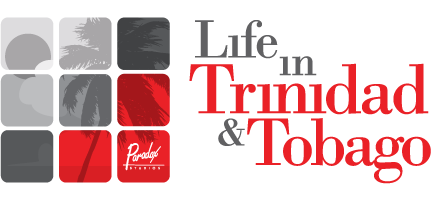Our Music
Kaiso/Calypso
A long time ago in the Nigerian Delta, Ibibio slaves would place two poles in the ground at a distance apart, place a bar across the poles and then take turns sidling under the bar. They would do this no matter how little space there was between the pole and the ground. Accompanying the dance was a motivational chant, “kaiso, kaiso, kaiso…” which meant “go forward”. While the dance itself is what we know today as the limbo, the word kaiso now refers to a type of music that also originated in West Africa.
Belting out kaiso rhythms was a popular pastime amongst West African slaves who would gather and sing clever, biting commentary about their masters. When the slaves were brought to the new world, they brought their melodies. Kaiso, which evolved into and became synonymous with Calypso music in Trinidad, became wildly popular in the early to mid-twentieth century. Performers such as Lord Invader, Lord Kitchener, Harry Belafonte, and the Mighty Sparrow elevated the form to an art and spread the sounds to an international audience. David Rudder is another notable performer who made his mark in calypso in the 80s and 90s.
Today, the Calypso Monarch competition is still a popular feature of T&T’s Carnival celebrations.
Soca
Soca music was created by Lord Shorty in the early 1970s as a way to revive the fading popularity of calypso by re-engineering the sound. He called the new rhythm the Soul of Calypso, hence Soca. The sound is not just derivative from kaiso and calypso, it is also influenced by cadence, funk, soul, even chutney and characterised by fast paced beats and energetic vocals. In the early days, the musicians gathered at KH Studios in Sea Lots, Trinidad to collaborate on many songs that became the first soca hits.
Today the International Soca Monarch competition in Trinidad, held annually during the Carnival season, is a huge draw for artistes and music lovers from around the globe. Superstars like Machel Montano, Superblue, and Destra Garcia have all performed and won.
Chutney
Chutney music is a staple of Indo-Caribbean culture.
In the early to mid-twentieth century, East Indian descendants in places like Suriname, Guyana, and T&T were performing their own versions of classical Indian religious songs using the dholak, the dhantal, and the harmonium that eventually gained enough traction to be recognised as a whole new musical genre.
In Suriname, Baithak Gana emerged as a new musical style that was very much similar to the chutney music we know today. Ramdew Chaitoe can be considered one of the first ever chutney stars. The Surinamese musician took the Baithak Gana sound to international audiences and became a household name. Over the years, artists such as Sundar Popo from Trinidad and Dropati from Suriname rose to prominence as chutney singers with international fame.
What makes chutney special to the Indo-Caribbean populace is that it is not wholly an Indian or an American/European influence. Although its roots are in religious music, chutney songs incorporate an upbeat flair that make them easy to dance to, while still not being too foreign.
In 1987, Trinidadian Drupatee Ramgoonai released an album entitled Chutney Soca which fused the two genres into one. Since then, chutney soca is wildly popular in T&T and in the Caribbean. The annual Chutney Soca Monarch competition is a huge event in T&T’s Carnival celebrations.

Parang
Parang is such an intrinsic aspect of our Christmas celebrations that going a whole season without hearing any of the familiar tunes just wouldn’t feel like Christmas for some Trinis.
There are two prevailing theories about how parang came to Trinidad. The first is that the influences came during the period of Spanish colonial rule, when the Spaniards brought the concept to the island. The second theory is that the Venezuelans who came to work on the cocoa plantations in the 19th century came with their musical traditions that flourished into modern day parang. It could very well be that the origins can be traced to both influences, however it is not too important to figure once for and all.
In places like Paramin, Lopinot, Arima, and some others, parang is a community event. Parang groups go around from door to door and play their songs while everyone participates in sharing food and drinks.
Typical instruments used are the guitar, the mandolin, the cuatro, the violin, the maracas, the clapper, the box bass, the tambourine, the scratcher (güiro) and the toc-toc (claves), all accompanied by melodic Spanish verses.
Today, the National Parang Association of Trinidad and Tobago controls the administration of festivals and other promotional campaigns for the preservation of the art in the country.


